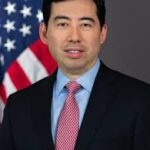

Mark Uyeda, commissioner at the SEC, spoke about the potential inclusion of private investments in defined contribution plans at the ICI Retail Alternatives and Closed-End Funds Conference on 20 November 2025
On 7 August this year President Trump issued an executive order on democratizing access to alternative investments for 401(k) retirement plans.
As market concentration has grown, a handful of large-cap technology companies have come to represent a disproportionate share of major stock indices. Uyeda cited data that the top 10 companies in the S&P 500 now account for nearly 40% of that index’s total market capitalization.
“In such an environment, the case for expanding the investment universe to include exposure to alternative investments becomes even more compelling,” Uyeda added .
In addition, the return of alternative investments such as private equity, private credit, venture capital, infrastructure, and real estate may be less correlated to traditional public markets. Therefore, alternatives can enhance overall performance and reduce volatility despite being less liquid than public assets. Uyeda also argued that long-term investors saving for retirement do not need daily liquidity and can benefit from the higher expected returns that come from longer holding periods.
“This is not speculative theory; it is observable in the asset allocation strategies of pension funds, endowments, and sovereign wealth funds, which have long embraced private markets as a core component of their investment approach,” Uyeda added. “The key metric is not nominal return, but risk-adjusted return – the return achieved per unit of risk taken.”
He highlighted that CalPERS reported a preliminary 11.6% return on its investments for fiscal year 2024–25. The California Public Employees’ Retirement System said this was due to its private equity portfolio, which had a 14.3% return and added $12.1bn to the overall value of the fund, net of fees.
Uyeda acknowledged that private assets valuations are infrequent and are often subjective. He highlighted that this underscores the importance of fiduciary oversight and professional management in evaluating, selecting, and monitoring such investments, which can be helped by the SEC co-ordinating its approach with the Department of Labor.
“While there might be debate on what is the optimal level of exposure to private investments, what is clear is that the answer is NOT zero,” he added. “The absence of access is not the same as the presence of protection.”
The SEC commissioner stressed that democratizing access to alternative assets must be accompanied by fiduciary rigor “rather than unsupported fearmongering.”
He also stressed the need to address the significant litigious environment that surrounds fiduciary decision-making for plan sponsors considering including private assets in defined-contribution plans.
“Lawsuits in this area are often driven by hindsight bias and very permissive pleading standards,” said Uyeda. “The risk of getting sued creates a chilling effect.”
Uyeda said that for lawsuits, plaintiffs should be required to identify specific recommendations, decisions, or processes that allegedly failed to meet the required standards of prudence and loyalty.
“With appropriate safeguards, fiduciary oversight, and thoughtful design, private assets can be responsibly integrated into retirement portfolios,” he said. “The institutional track record is not a reason for exclusion; instead, it is a roadmap for inclusion.”
Jennifer Grancio, global head of distribution at TCW, told Markets Media that the California-based fund manager believes that adding alternatives to retirement plans is a “good thing” as the average employee and retail investor will have access to alternatives in accounts that benefit from returns being compounded over decades.
“We think it is a good idea, but we also think it will take a long time to do the education, to get employer plan’s sponsors comfortable and to have the regulations catch up,” she added. “I think we are at the beginning of a 10 to 20-year journey here.”
Grancio agreed with Uyeda that the potential litigation that plan sponsors may face, simply for including alternative assets in their scheme, needs to be addressed. As a result of the litigation risk, plan sponsors tend to be very conservative as they do not want to be perceived as creating risk for employees.
In addition, many plan sponsors choose target date funds or inexpensive passive investments, and Grancio said it may be hard to persuade them to allocate to higher fee, higher risk alternative assets.
“Alternatives are conceptually a good idea, but these are the major headwinds,” Grancio added. “At TCW, we are very familiar with the space and the tensions, and we see it as our job to do some of the educational lift that has to happen to help this next chapter of opportunity.”
She stressed that it is the responsibility of asset managers, plan consultants, the corporate committee overseeing the plan to have conversations about due diligence and the monitoring of risks.
“For example, you could end up with private credit defaults or with worse returns than you think so that needs to be managed carefully,” said Grancio.
Global alternatives poised to reach $32 trillion by 2030
Assets under management in the global alternatives market are expected to reach $32 trillion by 2030, according to the Preqin Private Markets in 2030 report. This figure includes private equity, private credit, infrastructure, real estate, hedge funds, and natural resources.
The report from BlackRock’s private asset data provider said the wealth channel will underpin fundraising as the traditional 60/40 portfolio is giving way to a 50/30/20 split, with private markets now a core part of institutional portfolios.
The private wealth channel is expected to mirror this growth in allocations to private markets, with the secondaries market growing its share of total deal flow, as the focus has shifted to managing existing holdings, according to Preqin.
Cameron Joyce, head of research insights at Preqin, said in a statement that the transformation will be structural, as well cyclicall.
“The convergence of public and private markets is reshaping investor expectations, driving demand for transparency, standardized data, and whole portfolio solutions,” said Joyce.”Investors who embrace this evolution—powered by AI-driven efficiencies, infrastructure-led expansion, and a more unified investment data ecosystem—will be best positioned to capture long-term value.”
Other themes of the report are that artificial intelligence will be a core driver of venture capital-backed investment; new, more-liquid fund structures emerging in private credit; a recovery in exit volumes by 2030 kickstarting a new cycle in private equity and private markets and infrastructure accelerating as an asset class,
“European infrastructure assets under management growth rate is expected to outpace that of North America, driven by investments in energy security, digital infrastructure, and defense,” said Preqin.









